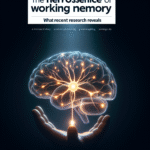
Introduction
In an increasingly chaotic world, where demands and distractions threaten our peace of mind, mindfulness has emerged as a powerful tool for stress relief. The practice of mindfulness, steeped in centuries of tradition, offers not just a momentary escape from life’s pressures but a sustainable way to cultivate lasting inner peace. In this article, we’ll explore Mindfulness Techniques for Stress Relief: Cultivating Peace in a Chaotic World, providing you with practical insights, anecdotal evidence, and empowering tools to take back control of your life.
The Importance of Mindfulness in Today’s Society
Stress has become the silent epidemic of our age, affecting our mental and physical health, relationships, and overall quality of life. According to the American Psychological Association, more than 75% of Americans regularly experience physical symptoms caused by stress. With this alarming statistic in mind, understand that cultivating mindfulness can transform how we respond to stress.
Real-World Impact of Mindfulness
Consider the case of Sarah, a corporate executive who found herself on the brink of burnout. After incorporating mindfulness techniques into her daily routine, she reported a significant reduction in stress levels, increased productivity, and improved relationships with her colleagues. This anecdote underscores the importance of mindfulness as a proven method for stress relief.
Mindfulness Techniques for Stress Relief
1. Mindful Breathing
One of the simplest and most effective mindfulness techniques is mindful breathing. This practice involves focusing solely on your breath, which can drastically reduce stress levels. When you pay attention to your inhalations and exhalations, you ground yourself in the present moment.
- How to Practice:
- Find a quiet space.
- Sit comfortably with your back straight.
- Close your eyes and take a deep breath in through your nose, hold it for a few seconds, then exhale slowly through your mouth.
- Repeat this for several minutes, allowing your mind to settle.
Table 1: Benefits of Mindful Breathing
| Benefits | Description |
|---|---|
| Reduced Anxiety | Lowers stress hormones in the body |
| Improved Focus | Enhances concentration and clarity |
| Emotional Regulation | Assists in managing feelings of anger and frustration |
2. Body Scan Meditation
Body scan meditation allows you to cultivate awareness of bodily sensations, which can be very useful during stressful times. This technique helps you recognize where tension resides in your body and encourages relaxation.
- How to Practice:
- Lie down in a comfortable position.
- Close your eyes and take a few deep breaths.
- Starting from your toes, mentally scan your body, noticing areas of tension.
- Release this tension with each exhale as you focus on each part.
3. Mindful Observation
Mindfulness doesn’t have to be a solitary practice. Mindful observation involves paying attention to the world around you, engaging your senses fully to cultivate awareness.
- How to Practice:
- Choose an object in your environment (it could be a leaf, a painting, or even your coffee cup).
- Spend a few minutes observing its details—its colors, texture, and even the way light interacts with it.
- Notice any thoughts or emotions that arise without judgment.
4. Guided Imagery
Guided imagery uses visualization to transport you to a peaceful place, significantly aiding relaxation. It’s particularly useful for those who find it challenging to sit in silence due to a racing mind.
- How to Practice:
- Close your eyes and take a few deep breaths.
- Imagine a serene landscape—perhaps a beach or forest.
- Engage your senses as you visualize the scene, from the sound of the waves to the scent of pine trees.
5. Mindful Movement
Mindful movement includes practices such as yoga or tai chi, where the focus is on connecting the body with the breath. These methods can dissolve stress and promote overall wellness.
- How to Practice:
- Find a quiet space and choose a movement practice (e.g., yoga).
- Move slowly and intentionally, paying close attention to your body and its sensations.
- Maintain an awareness of your breathing throughout.
Case Studies in Mindfulness
Case Study: The Workplace Application of Mindfulness
A major tech company implemented a mindfulness program aimed at reducing stress and increasing productivity among employees. Within six months, the company reported a 30% reduction in stress-related health claim costs and a 25% increase in employee satisfaction surveys.
Analysis: This case demonstrates that institutional support for mindfulness not only aids in stress relief but also enhances overall workplace morale.
Case Study: Mindfulness in Schools
A school district introduced mindfulness techniques into their curriculum for students experiencing anxiety. Following the program, surveys indicated a 40% reduction in reported anxiety levels among students.
Analysis: This highlights how mindfulness techniques can cultivate peace not only in adults but also in children, providing them tools to cope with stress from a young age.
Advanced Mindfulness Practices
As you become more comfortable with foundational mindfulness techniques, you may want to explore advanced practices to deepen your experience.
1. Mindfulness Journaling
Journaling invites you to express your thoughts, feelings, and experiences mindfully. This reflective practice allows you to process emotions and recognize patterns in your stress triggers.
2. Loving-Kindness Meditation
This technique focuses on generating positive feelings towards oneself and others. Through repetition of phrases wishing well to yourself and others, you cultivate a compassionate attitude that can combat stress.
3. Nature Therapy
Connecting with nature can be one of the most impactful mindfulness techniques for stress relief. Activities like hiking, gardening, or simply enjoying outdoor spaces can enhance your emotional and psychological well-being.
Implementing Mindfulness into Daily Life
Creating a Mindfulness Routine
To effectively incorporate mindfulness techniques for stress relief into your life, it’s crucial to establish a routine. Here’s a simple plan to get started:
- Morning: Begin your day with 10 minutes of mindful breathing.
- Midday: Take a brief break for a body scan to check in with your body.
- Evening: End your day with a guided imagery session or mindful journaling.
Setting Realistic Goals
When adopting mindfulness practices, set achievable goals. Start small—perhaps dedicating just five minutes a day—and gradually increase this time as you become more comfortable.
Conclusion
In a chaotic world filled with stressors, the journey to cultivate peace can often feel daunting. However, by exploring and implementing Mindfulness Techniques for Stress Relief: Cultivating Peace in a Chaotic World, you can reclaim your inner calm and restore balance in your life. Each technique from mindful breathing to nature therapy offers unique benefits that contribute to overall well-being. Embrace these practices, experiment with them, and find what resonates with you—therein lies the key to lasting peace.
FAQs
1. What is mindfulness, and how does it reduce stress?
Mindfulness is the practice of being fully present in the moment, which helps in identifying and managing stress by alleviating anxiety and promoting self-awareness.
2. How long should I practice mindfulness techniques for them to be effective?
Even a few minutes of daily practice can yield significant benefits. Start slow and increase your mindfulness practice over time.
3. Can mindfulness help with chronic stress or anxiety disorders?
Yes, studies have shown that mindfulness techniques can be highly effective for managing chronic stress and anxiety, contributing to improved mental health.
4. Do I need to be in a quiet place to practice mindfulness techniques?
While a quiet environment can enhance your practice, mindfulness can be practiced in various settings—at work, outdoors, or even in crowded spaces.
5. How can I stay motivated to maintain a mindfulness practice?
Set reminders, join mindfulness groups, or communicate your goals with friends to create accountability. Celebrating small milestones in your practice can also keep your motivation high.
Incorporate these practical techniques into your life, and start fostering a sense of peace and resilience amid life’s uncertainties. The journey to mindfulness begins with a single breath—embrace it today.
















